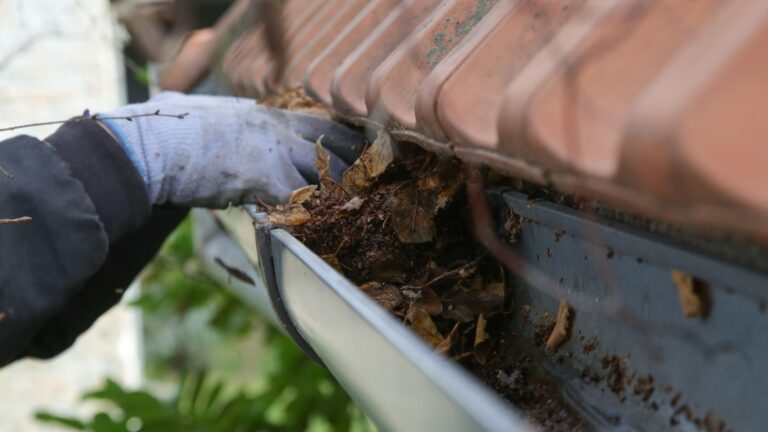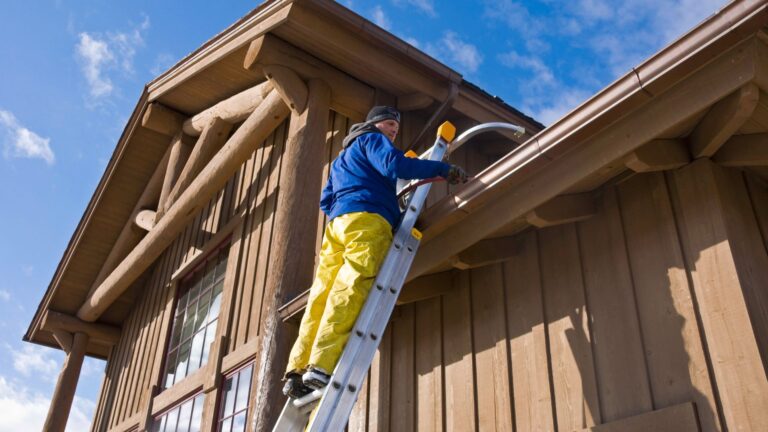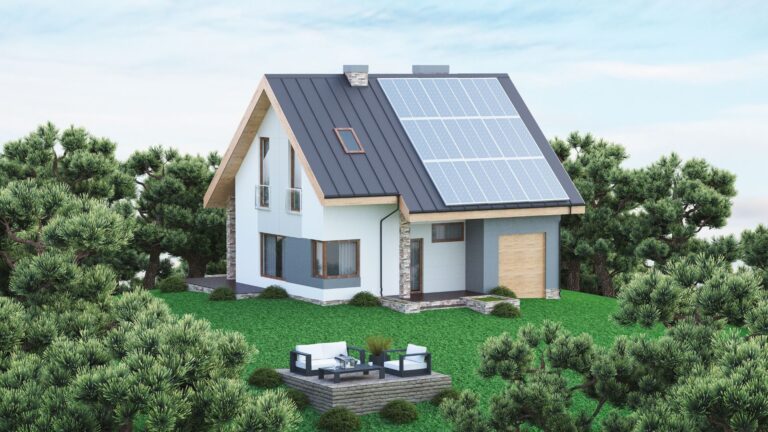Gutters play a crucial role in protecting your home by directing rainwater away from the foundation, roof, and walls. Well-maintained gutters prevent water damage, mold growth, and soil erosion, ensuring the structural integrity of your property. However, when gutters become damaged or worn out, they can no longer function efficiently, leading to costly repairs and potential hazards. Ignoring gutter issues can lead to basement flooding, rotting fascia boards, and even weakened foundations, which compromise the safety and value of your home.
Recognizing the signs of failing gutters is essential to prevent extensive damage. Cracks, sagging sections, frequent leaks, and rust are all indicators that it may be time for a replacement. Water pooling around the foundation, peeling exterior paint, and mold growth are additional warning signs of ineffective gutters. By identifying these issues early and replacing your gutters when necessary, you can safeguard your home against severe water damage and maintain its long-term durability.
Table of Contents
Visible Damage and Cracks
Gutters are exposed to rain, wind, and fluctuating temperatures, making them prone to wear and tear over time. Even small cracks or fractures can compromise their ability to effectively channel water away from your home. While minor damage might seem harmless at first, it can gradually worsen, leading to leaks, structural deterioration, and costly repairs. Regularly inspecting your gutters for visible damage can help prevent larger issues before they arise.
Hairline Cracks vs. Major Fractures
Type of Crack | Description | Impact on Gutter System | Solution |
Hairline Cracks | Small, thin cracks that develop due to aging, exposure to UV rays, or seasonal temperature changes | Initially minor, but can expand over time, causing slow leaks and weakening the gutter structure | Can be sealed with gutter sealant if detected early; however, widespread cracks indicate the need for replacement |
Major Fractures | Large splits or broken sections are often caused by heavy storms, debris impact, or aging materials | Causes immediate water leakage, leading to damage to siding, foundation, and landscaping | Requires full replacement, as repairs are often temporary and ineffective for large fractures |
Impact on Water Flow and Drainage Efficiency
- Disrupted Water Flow – Cracks allow water to escape instead of being directed away, leading to pooling around the home.
- Soil Erosion – Water leaking from damaged gutters can erode soil, weakening the landscape and foundation.
- Debris Accumulation – Gaps in gutters trap leaves and dirt, increasing the risk of blockages and overflow.
- Fascia and Siding Damage – Persistent leaks can lead to wood rot, mold growth, and peeling paint on your home’s exterior.
- Basement and Foundation Issues – Water seeping near the foundation increases the risk of basement flooding and cracks in concrete structures.
Frequent Gutter Leaks
Leaky gutters are a serious problem that can lead to water damage if left unaddressed. Even small leaks can grow over time, allowing water to escape instead of being directed away from your home. When gutters fail to contain and channel rainwater properly, it increases the risk of foundation damage, basement flooding, and mold growth. Identifying and fixing leaks early can prevent costly repairs and protect your home’s structural integrity.
Signs of Water Seepage Around the Foundation
Water seepage around your home’s foundation is one of the most common consequences of leaking gutters. Here are some key signs to look out for:
- Pooled Water Near the Foundation – If you notice standing water around the base of your home after it rains, it may be due to gutter leaks.
- Cracks in Foundation Walls – Continuous water exposure weakens the foundation, leading to visible cracks in the walls or flooring.
- Mold or Mildew Growth – Excess moisture from gutter leaks creates a damp environment where mold and mildew thrive, often seen in basements or crawl spaces.
- Soil Erosion Around the House – Water leaking from faulty gutters washes away the soil, destabilizing the ground near your foundation.
Basement Flooding or Dampness – If water consistently finds its way into your basement, faulty gutters may be to blame.
How Leaks Lead to Structural Damage
When gutters leak, they fail to direct rainwater away from crucial parts of your home. This can cause:
- Foundation Weakening – Continuous water exposure softens and cracks concrete foundations, compromising your home’s stability.
- Rotting Fascia and Soffits – Persistent leaks cause wood fascia and soffits to decay, leading to costly repairs.
- Roof Damage – Water backing up from leaking gutters can seep under roofing materials, causing leaks and deterioration.
- Compromised Landscaping – Excess water from leaks can destroy gardens, drown plants, and wash away mulch.
- Increased Risk of Pest Infestation – Standing water and moisture attract termites, mosquitoes, and rodents, creating further issues.
Addressing gutter leaks as soon as they appear is crucial to preventing long-term structural damage and maintaining your home’s overall health. Regular inspections and timely replacements can help keep your property safe and dry.
Sagging or Pulling Away from the Roofline
Sagging gutters are a clear indication that your drainage system is failing. When gutters begin to pull away from the roofline, they lose their ability to direct water away from your home, increasing the risk of serious water damage. Identifying the causes early can help prevent costly repairs and structural issues.
Why Gutters Start to Sag Over Time
Gutters can start to sag due to various reasons, with one of the most common being excess debris buildup. Leaves, dirt, and twigs accumulate over time, adding unnecessary weight and straining the fasteners that hold the gutters in place. Water pooling inside the gutters due to poor drainage or blockages also increases pressure, causing them to warp and bend. In many cases, weak or loose fasteners contribute to sagging, as screws, nails, and brackets can deteriorate over time due to rust and weather exposure. Additionally, aging materials play a role, as older gutters made of thinner metals or plastic tend to weaken, making them more prone to bending and detaching. Heavy snowfall and ice accumulation during winter months can also place excessive weight on gutters, accelerating the sagging process and leading to potential detachment from the fascia board.
Risks of Ignoring Detached Gutters
- Water Overflow and Damage – Misaligned gutters fail to drain properly, causing water to spill over and damage siding, windows, and foundations.
- Rotting Fascia Boards – Water leaking behind the gutters seeps into wooden fascia boards, leading to rot and structural weakening.
- Foundation Erosion and Basement Flooding – Poor drainage causes soil erosion around the foundation, increasing the risk of cracks and water seepage into basements.
- Pest Infestations – Stagnant water in sagging gutters attracts mosquitoes, termites, and rodents, leading to further home issues.
- Increased Repair Costs – The longer sagging gutters go unrepaired, the more damage they cause, leading to expensive home restoration.
Rust and Corrosion
Rust and corrosion are common problems that affect metal gutters over time, especially in areas with high humidity or frequent rainfall. When gutters are exposed to moisture for extended periods, oxidation occurs, leading to rust formation. This weakens the gutter material, causing it to deteriorate and develop holes or cracks. Rust not only affects the appearance of your gutters, but also compromises their ability to direct water away from your home efficiently. If left unaddressed, corroded gutters can lead to leaks, water damage, and costly repairs.
How Rust Weakens Metal Gutters
Rust gradually eats away at the metal surface, making gutters brittle and prone to breakage. Initially, small patches of rust may appear as discoloration, but over time, they expand and weaken the structure. As rust spreads, the metal becomes thinner, leading to holes that allow water to leak through, instead of being directed to the downspouts. These leaks can cause water to drip onto siding, foundation walls, and landscaping, increasing the risk of structural damage. Additionally, rust weakens the gutter joints and seams, making them more likely to separate or collapse under heavy rainfall. The longer rust is ignored, the worse the damage becomes, ultimately requiring complete gutter replacement.
Preventing Corrosion with Proper Gutter Maintenance
Preventing rust and corrosion starts with routine gutter maintenance. Regularly cleaning gutters to remove leaves, dirt, and debris helps prevent moisture buildup, which accelerates rust formation. Applying a protective coating or sealant to metal gutters can also create a barrier against moisture and oxidation. Checking for early signs of rust and addressing them with rust-resistant paint or sealants can help extend the lifespan of your gutters. Additionally, ensuring proper drainage and repairing small leaks before they worsen will prevent water from sitting in the gutters and causing further corrosion. For homes in areas prone to rusting, investing in rust-resistant materials, such as aluminum or vinyl gutters, can be a long-term solution. By taking proactive steps, homeowners can significantly reduce the chances of rust and corrosion, keeping their gutters functional and efficient for years to come.
Peeling Paint or Staining on Exterior Walls
If you notice peeling paint, discoloration, or water stains on your home’s exterior walls, your gutters may not be functioning properly. Gutters are designed to direct rainwater away from the house, but when they fail, water spills over the sides, constantly soaking the walls. Over time, excessive moisture damages the exterior paint and siding, leading to costly repairs. Addressing gutter problems early can help prevent aesthetic and structural damage to your home.
Water Overflow and Paint Damage
One of the main causes of peeling paint and stains is water overflow from clogged, sagging, or damaged gutters. When gutters can’t properly channel rainwater, it spills over the edges, running down the exterior walls. Continuous exposure to moisture weakens paint adhesion, causing it to bubble, crack, and eventually peel off. In addition to ruining the paint, excess water can seep into the siding, leading to rot, mold growth, and structural weakening. Brick and stucco homes are also at risk, as prolonged water exposure can cause unsightly staining, efflorescence (white salt deposits), and even cracks in the material.
What Discoloration Indicates About Gutter Failure?
Stains and discoloration on exterior walls are clear indicators that your gutters are not working as they should. Brown or dark streaks on siding often signal that water is constantly dripping down due to overflowing gutters. Greenish stains or mold growth suggest prolonged moisture retention, leaks usually cause which or poor drainage. White chalky residue, commonly found on brick walls, may indicate that water is seeping through cracks in the masonry due to inefficient gutters. If left untreated, these issues can lead to wood rot, insulation damage, and compromised structural integrity. Regular gutter inspections, timely repairs, and proper maintenance are essential to preventing water-related exterior damage and maintaining the curb appeal and longevity of your home.
Basement Flooding or Foundation Issues
Faulty gutters don’t just affect the roof and siding—they can also lead to serious basement flooding and foundation problems. When gutters fail to direct water away from your home, excess rainwater collects around the foundation. Over time, this can cause soil erosion, foundation cracks, and even water seepage into your basement. Addressing gutter issues early is essential to preventing costly structural damage.
Connection Between Faulty Gutters and Basement Water Damage
Issue | How It Leads to Basement Flooding |
Overflowing Gutters | Excess water spills over the sides, saturating the ground near the foundation and increasing the risk of leaks. |
Clogged Downspouts | Blocked downspouts prevent proper drainage, causing water to back up and pool around the home’s perimeter. |
Poor Gutter Slope | Improperly angled gutters fail to channel water toward downspouts, leading to standing water near the foundation. |
Leaking or Damaged Gutters | Holes or cracks in gutters allow water to drip continuously, eroding the soil and seeping into basement walls. |
Short or Misaligned Downspouts | Downspouts that release water too close to the house direct moisture into the foundation instead of away from it. |
Protecting Your Home’s Foundation with Proper Drainage
- Keep Gutters Clean – Regularly remove debris to ensure water flows freely through the system.
- Check for Leaks and Damage – Repair cracks, holes, or sagging gutters to prevent water from escaping where it shouldn’t.
- Ensure Proper Gutter Slope – Adjust the angle of gutters to direct water efficiently toward downspouts.
- Extend Downspouts Away from the Foundation – Use extensions or splash blocks to direct water at least 5–10 feet away from the home.
- Install a French Drain or Drainage System – Improve yard drainage by adding underground pipes to redirect excess water.
- Monitor Soil Grading Around the Home – Ensure the ground slopes away from the foundation to prevent water from pooling.
- Inspect and Maintain Sump Pumps – If your basement is prone to flooding, a functional sump pump can help remove excess water.
Proper gutter maintenance and drainage solutions play a critical role in protecting your home’s foundation. Addressing minor gutter issues early can prevent expensive repairs and keep your basement dry year-round.
Water Pooling Around the Property
When gutters fail to effectively channel water away from your home, excess rainwater collects around the property, creating pools of standing water. This not only damages your landscaping, but also poses a risk to your home’s foundation. Poor drainage can lead to soil erosion, weakening the ground and causing uneven surfaces or sinking areas in your yard. Over time, persistent water pooling can also encourage the growth of mold, mildew, and unwanted pests like mosquitoes, further impacting the safety and appearance of your outdoor space.
How Poor Gutter Performance Leads to Landscape Erosion
Gutters are designed to control the flow of rainwater, preventing it from washing away topsoil and damaging plant beds. However, when gutters become clogged, cracked, or misaligned, they allow water to spill over the edges, instead of directing it safely through the downspouts. This uncontrolled water runoff can erode garden beds, wash away mulch, and damage delicate plant roots. In severe cases, erosion can lead to unstable ground around your home, increasing the likelihood of foundation shifting or cracks. Without proper water management, the aesthetics and structural integrity of your landscape suffer, leading to costly repairs and restoration efforts.
Dangers of Excess Moisture Near the Home
Excess moisture near your home’s foundation creates various problems beyond just landscape damage. Prolonged exposure to standing water weakens concrete foundations, causing cracks and instability that may lead to basement leaks or even structural shifts. Moist soil also attracts termites and other pests, which can invade your home and cause extensive wood damage. Additionally, high humidity levels from excess moisture promote mold growth on exterior walls, decks, and patios, increasing the risk of health issues for your household. If left unaddressed, water pooling can lead to long-term property damage, making proper gutter maintenance essential for preserving both your home and outdoor spaces.
Mold, Mildew, and Pest Infestations
Clogged or damaged gutters create the perfect environment for mold growth, mildew buildup, and pest infestations. When gutters fail to drain water properly, standing water accumulates, leading to excessive moisture around your home. This damp environment encourages the growth of mold and mildew, which can spread quickly on exterior walls, rooflines, and even inside your home if the issue remains unresolved. Additionally, stagnant water and debris-filled gutters attract insects, rodents, and other pests, turning your gutter system into a breeding ground for unwanted infestations.
Why Clogged or Broken Gutters Attract Pests
Gutters filled with leaves, twigs, and stagnant water provide an ideal shelter and food source for various pests. Mosquitoes, for example, lay their eggs in standing water, increasing the risk of infestations during warmer months. Rodents and birds may also nest inside clogged gutters, using debris as insulation. Termites and carpenter ants are drawn to damp, rotting wood, which often occurs when gutters leak and allow moisture to seep into fascia boards and siding. Additionally, clogged gutters create hidden entry points for pests, making it easier for them to access your attic or walls, leading to more extensive infestations.
Health Risks of Mold Growth Due to Gutter Failure
- Respiratory Issues – Mold spores can trigger asthma, allergies, and other respiratory problems, especially in children and the elderly.
- Skin and Eye Irritation – Prolonged exposure to mold can cause skin rashes, redness, and irritation of the eyes.
- Increased Risk of Infections – Mold exposure weakens the immune system, making individuals more susceptible to infections.
- Toxic Mold Exposure – Some types of mold, like black mold, release mycotoxins that can cause serious health conditions, including neurological issues.
- Worsening Indoor Air Quality – Mold spores spread through the air, lowering indoor air quality and making your home unsafe to breathe in.
Proper gutter maintenance is crucial in preventing mold growth and pest infestations. By ensuring your gutters are clean and functional, you can protect your home and family from the harmful effects of moisture-related issues.
Outdated or Poorly Installed Gutters
Older or improperly installed gutters can cause more harm than good, leading to frequent leaks, sagging, and inadequate water drainage. Many older gutter systems are made from materials that rust, corrode, or warp over time, making them less effective at channeling rainwater away from your home. Additionally, poor installation—such as incorrect sloping or improper fastener placement—can lead to water pooling, overflowing, or even causing sections of the gutter to detach. If your gutters are outdated or not installed correctly, replacing them with a modern system can significantly improve water management and prevent costly damage to your home’s foundation and exterior.
When to Upgrade to Seamless or Aluminum Gutters
Traditional sectional gutters have seams and joints that are prone to leaks and clogging over time. Upgrading seamless gutters eliminates these weak points, reducing the risk of water leaks and blockages. Aluminum gutters, in particular, offer a lightweight, rust-resistant, and durable alternative to older materials like steel or vinyl. If you notice frequent repairs, peeling paint, sagging sections, or water stains on your home’s siding, it may be time to invest in a more efficient gutter system. Upgrading seamless or aluminum gutters can improve your home’s curb appeal while enhancing its overall drainage performance.
Benefits of Modern Gutter Systems for Better Drainage
- Leak Prevention – Seamless gutters have fewer joints, reducing the chances of water leaks and damage.
- Increased Durability – Aluminum and copper gutters resist rust and corrosion, lasting longer than traditional materials.
- Low Maintenance – Modern gutter systems require less frequent cleaning and upkeep compared to older designs.
- Improved Water Flow – Better design and material quality ensure efficient water drainage, preventing overflow and flooding.
- Enhanced Aesthetic Appeal – Seamless and aluminum gutters come in various colors and finishes to complement your home’s exterior.
- Higher Return on Investment – Newer gutter systems add value to your home by improving functionality and reducing long-term maintenance costs.
Conclusion
Recognizing the warning signs of failing gutters—such as visible damage, sagging, leaks, rust, mold growth, and water pooling—can help prevent costly repairs and structural damage to your home. Timely gutter replacement is crucial to maintaining proper drainage, protecting your foundation, and preventing issues like basement flooding or pest infestations. Ignoring these signs can lead to severe water damage, compromising both the integrity and safety of your property. If you’ve noticed any of these problems, consulting a professional for a thorough inspection and expert advice on repair or replacement is the best way to ensure your home remains well-protected from the elements.






